Factorisation
To find the \(x\)-intercepts for graphs of quadratic functions, you need to solve for \(x\). Sometimes, this involves factorising the quadratic, so make sure you are confident with this skill. Use this resource if you need a refresher!
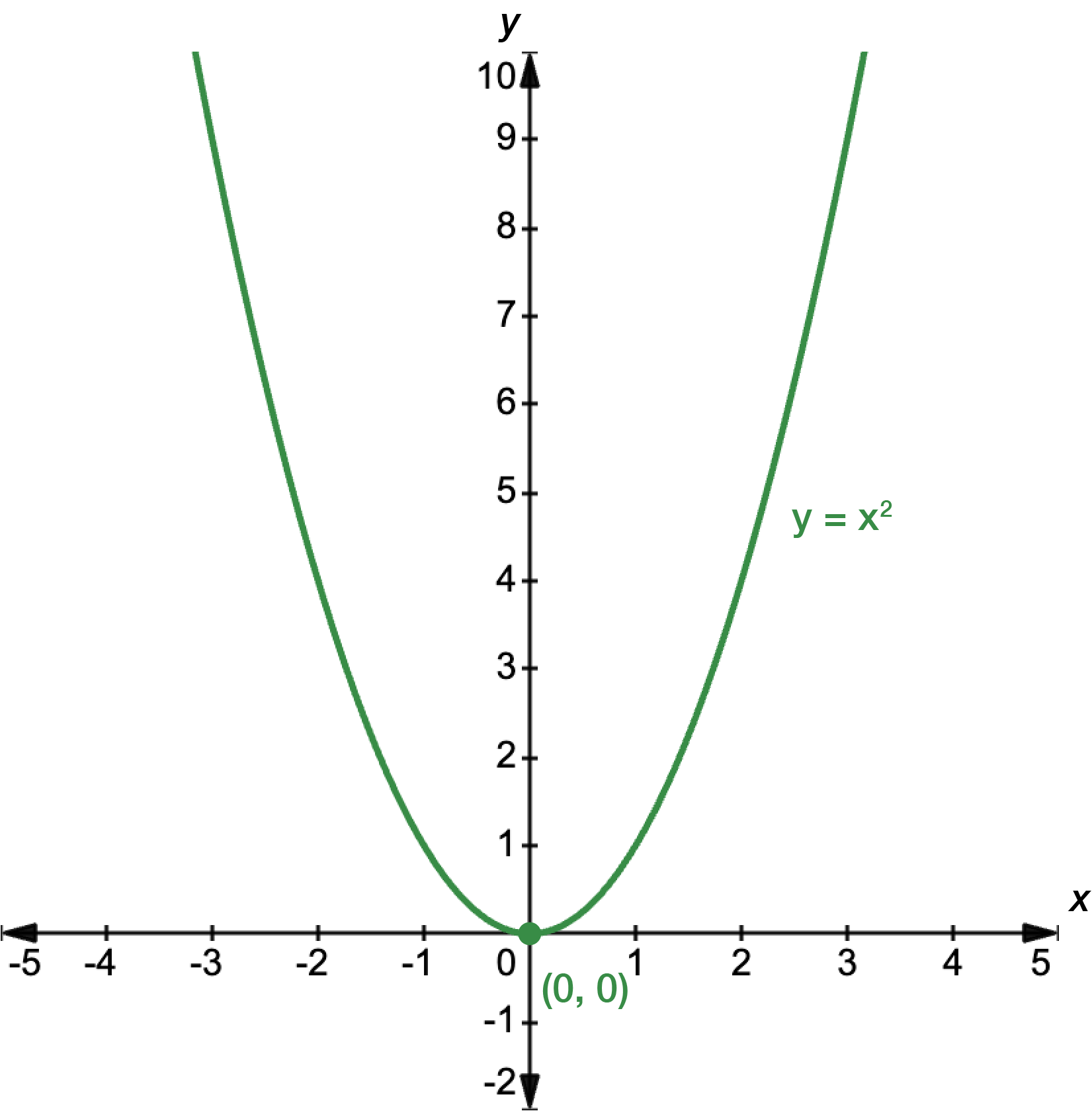
Quadratic functions have a distinct parabolic shape. Graphs of quadratic functions have applications in a wide range of fields, like modelling projectile motion, optimising business revenue, analysing population growth and designing bridges and arches. Use this resource to learn about parabolas and how to sketch them.
A quadratic function has the form:
\[y=ax^{2}+bx+c\] where \(a\neq0\).
The graph of a linear function is called a parabola.
To sketch a parabola, there are three components you must label.
A parabola is a symmetrical about a vertical line that runs through the turning point.
The \(a\) in the quadratic equation tells you some information about the shape of the parabola.
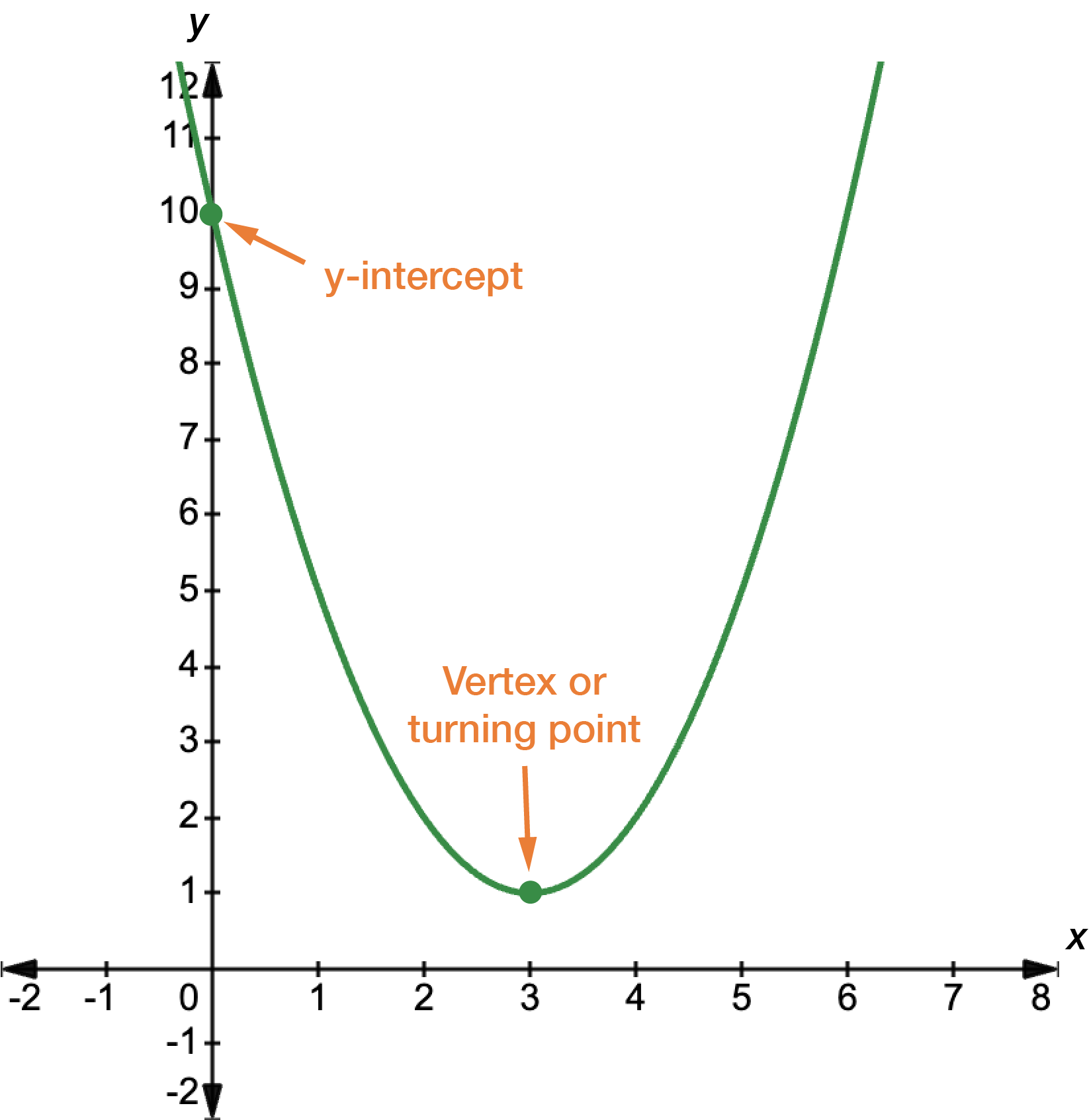
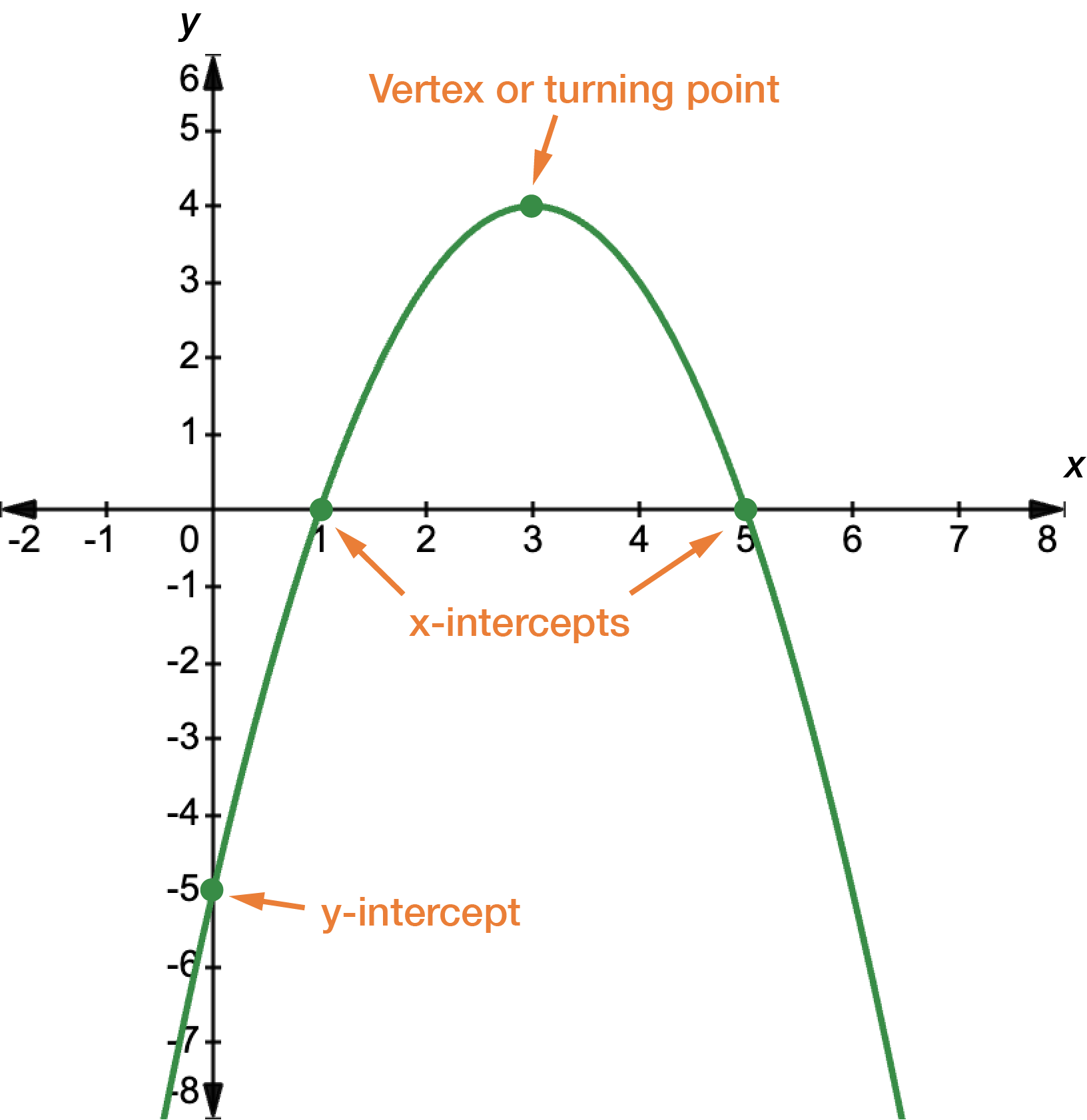
To find the \(x\)-coordinate of the turning point, you substitute \(b\) and \(a\) into the equation:
\[x=-\dfrac{b}{2a}\]
Then, you simply substitute the value of \(x\) into the quadratic equation to find the corresponding \(y\)-coordinate.
You can also write a quadratic function in turning point form:
\[y=a(x-h)^{2}+k\] where \((h,k)\) is the turning point.
Find the turning point of \(y=(x-3)^{2}+4\).
The quadratic function has been written in turning point form.
\[\begin{align*} y & = a(x-h)^{2}+k\\
& = 1(x-3)^{2}+4
\end{align*}\]
\(h=3\) and \(k=4\). The turning point is \((h,k)=(3,4)\).
The quadratic function has been written in turning point form.
\[\begin{align*} y & = a(x-h)^{2}+k\\
& = 1(x+5)^{2}+2
\end{align*}\]
\(h=-5\) and \(k=2\). The turning point is \((h,k)=(-5,2)\).
The quadratic function has been written in turning point form.
\[\begin{align*} y & = a(x-h)^{2}+k\\
& = 2(x+1)^{2}+0
\end{align*}\]
\(h=-1\) and \(k=0\). The turning point is \((h,k)=(-1,0)\).
We can rewrite the function in turning point form: \(y=(x-0)^{2}-7\).
\[\begin{align*} y & = a(x-h)^{2}+k\\
& = 1(x-0)^{2}-7
\end{align*}\]
\(h=0\) and \(k=-7\). The turning point is \((h,k)=(0,-7)\).
Alternatively, we can use the formula \(x=-\dfrac{b}{2a}\). In \(y=x^{2}-7\), \(a=1\) and \(b=0\). This gives us:
\[\begin{align*} x & = -\frac{0}{2(1)}\\
& = 0
\end{align*}\]
We substitute \(x=0\) into the equation to find the corresponding \(y\)-coordinate.
\[\begin{align*} y & = x^{2}-7\\
& = (0)^{2}-7\\
& = -7
\end{align*}\]
Therefore, the coordinates of the turning point are \((0,-7)\).
We can rewrite the function in turning point form: \(y=-(x-2)^{2}+6\).
\[\begin{align*} y & = a(x-h)^{2}+k\\
& = -1(x-2)^{2}+6
\end{align*}\]
\(h=2\) and \(k=6\). The turning point is \((h,k)=(2,6)\).
Find the turning point of the graphs of the following functions.
Sketch \(y=x^{2}\).
First, find the \(x\)- and \(y\)-intercepts. For \(x\), let \(y=0\).
\[\begin{align*} y & = x^{2}\\
0 & = x^{2}\\
x & = 0
\end{align*}\]
For \(y\), let \(x=0\).
\[\begin{align*} y & = x^{2}\\
& = 0^{0}\\
& = 0
\end{align*}\]
The graph intercepts the \(x\)-axis at \(x=0\), and the \(y\)-axis at \(y=0\). Next, we find the turning point. We can do this by rewriting the function in its turning point form.
\[\begin{align*} y & = a(x-h)^{2}+k\\
& = 1(x-0)^{2}+0
\end{align*}\] \(h=0\) and \(k=0\), so the turning point occurs at \((0,0)\).
Sketch the graph, making sure to label the \(x\)- and \(y\)-intercepts, and the turning point.

First, find the \(x\)- and \(y\)-intercepts. For \(x\), let \(y=0\).
\[\begin{align*} y & = (x-1)^{2}-2\\
0 & = (x-1)^{2}-2\\
2 & = (x-1)^{2}\\
\pm\sqrt{2} & = x-1\\
x & = \pm\sqrt{2}+1
\end{align*}\]
For \(y\), let \(x=0\).
\[\begin{align*} y & = (x-1)^{2}-2\\
& = (0-1)^{2}-2\\
& = 1-2\\
& = -1
\end{align*}\]
The graph intercepts the \(x\)-axis at \(x=-\sqrt{2}+1\) and \(x=\sqrt{2}+1\), and the \(y\)-axis at \(y=-1\). Next, we find the turning point. The function is already in turning point form.
\[\begin{align*} y & = a(x-h)^{2}+k\\
& = 1(x-1)^{2}-2
\end{align*}\] \(h=1\) and \(k=-2\), so the turning point occurs at \((1,-2)\).
Sketch the graph, making sure to label the \(x\)- and \(y\)-intercepts, and the turning point.
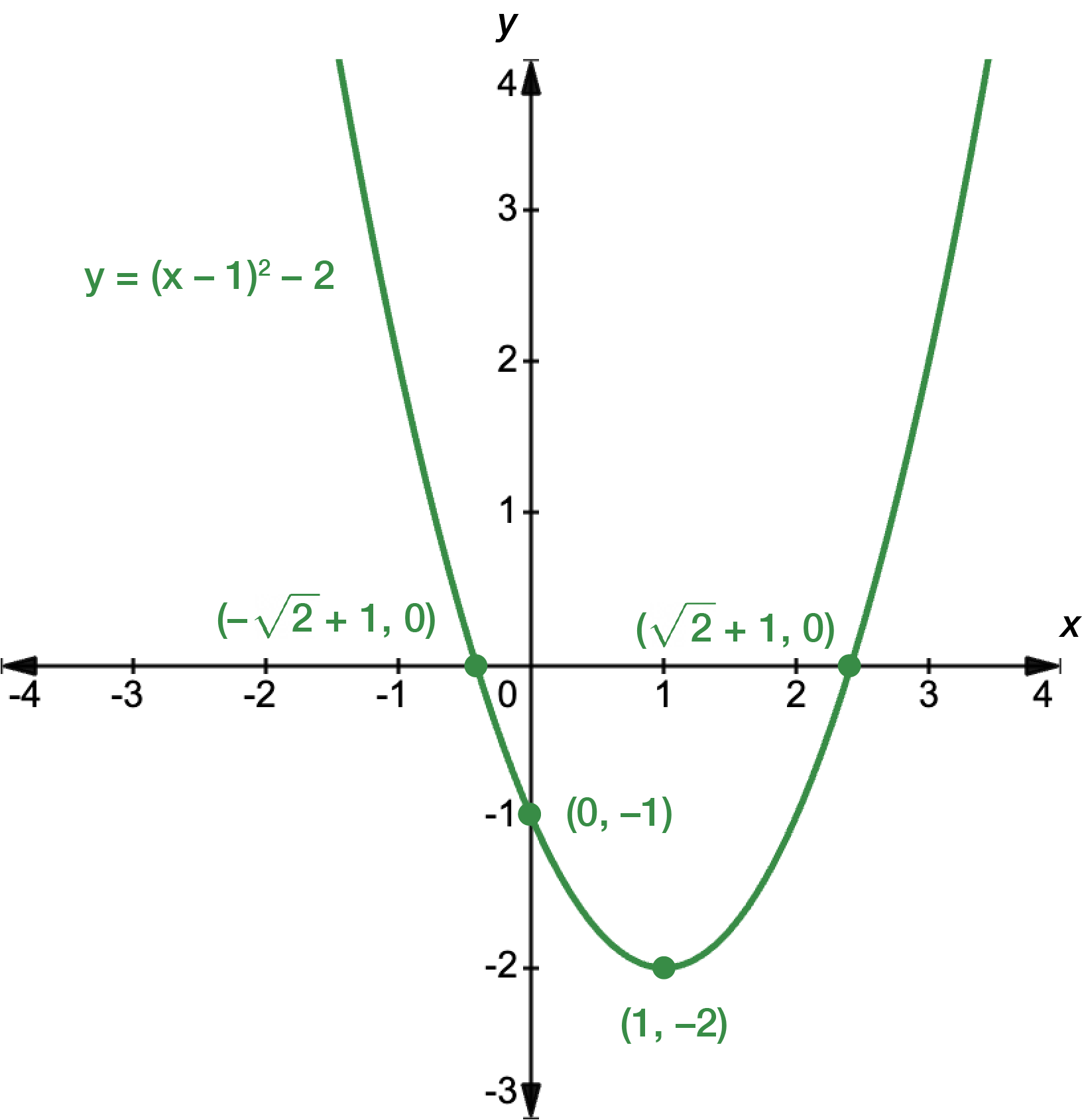
First, find the \(x\)- and \(y\)-intercepts. For \(x\), let \(y=0\).
\[\begin{align*} y & = x^{2}+3\\
0 & = x^{2}+3\\
-3 & = x^{2}\\
x & = \pm\sqrt{-3}
\end{align*}\]
\(\sqrt{-3}\) has no real solutions, so there are no \(x\)-intercepts, i.e. the graph does not touch the horizontal axis.
For \(y\), let \(x=0\).
\[\begin{align*} y & = x^{2}+3\
& = 0^{0}+3\\
& = 3
\end{align*}\]
The graph intercepts the \(y\)-axis at \(y=3\). Next, we find the turning point. We can do this by rewriting the function in its turning point form.
\[\begin{align*} y & = a(x-h)^{2}+k\\
& = 1(x-0)^{2}+3
\end{align*}\] \(h=0\) and \(k=3\), so the turning point occurs at \((0,3)\).
Sketch the graph, making sure to label the \(x\)- and \(y\)-intercepts, and the turning point.
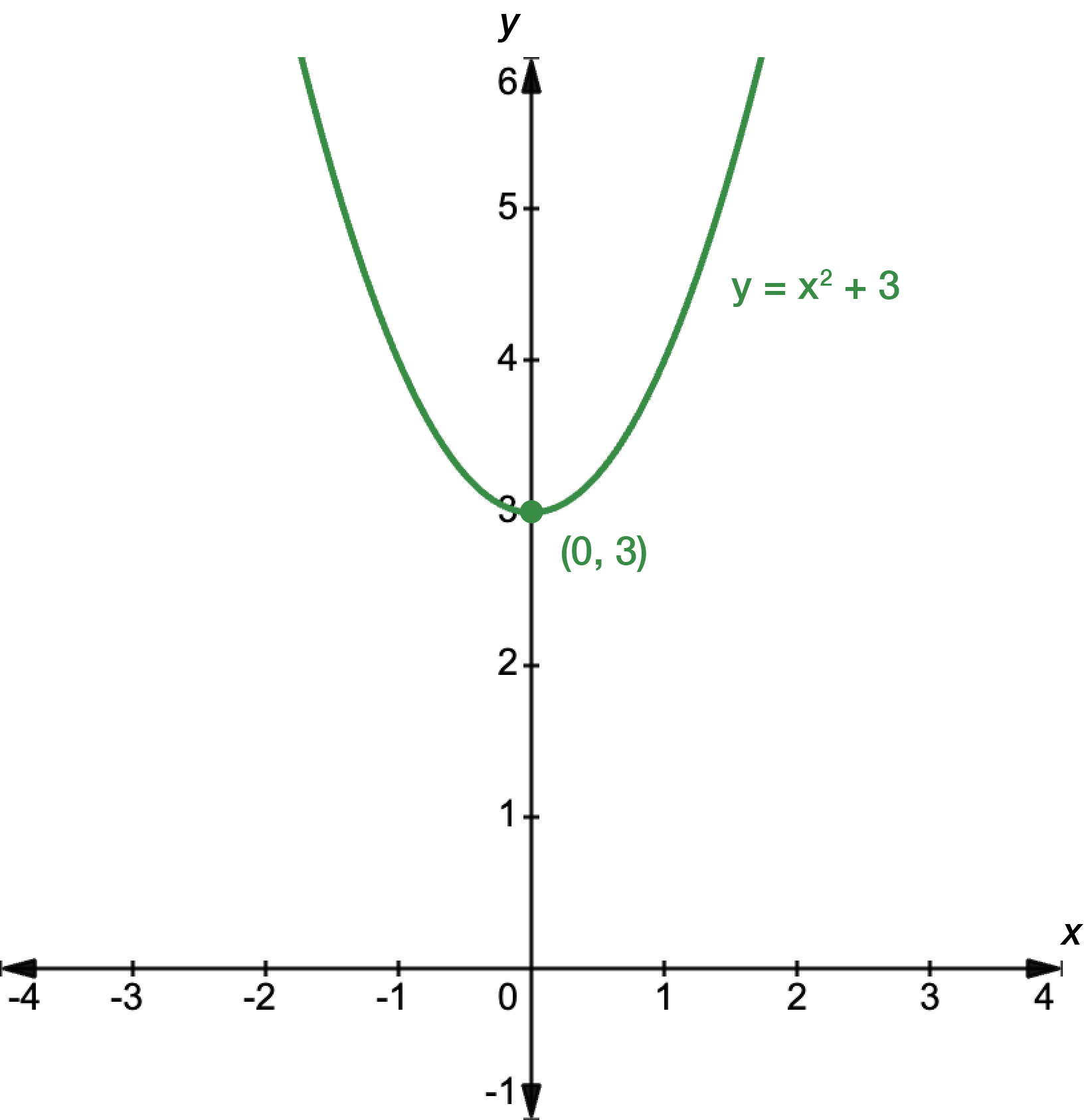
First, find the \(x\)- and \(y\)-intercepts. For \(x\), let \(y=0\).
\[\begin{align*} y & = 4-2(x+3)^{2}\\
0 & = 4-2(x+3)^{2}\\
4 & = 2(x+3)^{2}\\
2 & = (x+3)^{2}\\
\pm\sqrt{2} & = x+3\\
x & = \pm\sqrt{2}-3
\end{align*}\]
For \(y\), let \(x=0\).
\[\begin{align*} y & = 4-2(x+3)^{2}\\
& = 4-2(0+3)^{2}\\
& = 4-2(9)\\
& = 4-18\\
& = -14
\end{align*}\]
The graph intercepts the \(x\)-axis at \(x=-\sqrt{2}-3\) and \(x=\sqrt{2}-3\), and the \(y\)-axis at \(y=-14\). Next, we find the turning point. We can do this by rewriting the function in its turning point form.
\[\begin{align*} y & = a(x-h)^{2}+k\\
& = -2(x+3)^{2}+4
\end{align*}\]
\(h=-3\) and \(k=4\), so the turning point occurs at \((-3,4)\).
Sketch the graph, making sure to label the \(x\)- and \(y\)-intercepts, and the turning point.
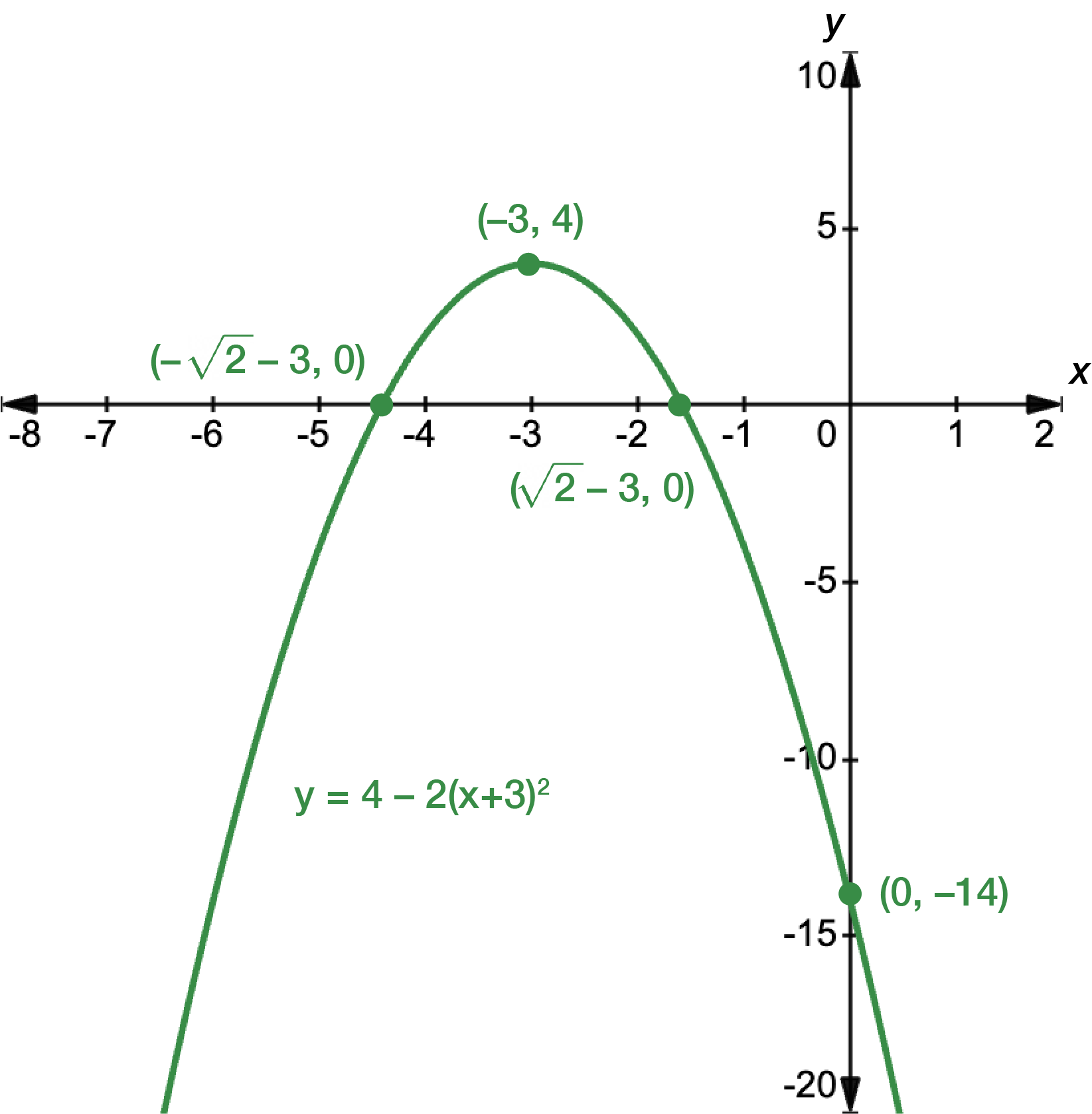
First, find the \(x\)- and \(y\)-intercepts. For \(x\), let \(y=0\).
\[\begin{align*} y & = x^{2}+2x-8\\
0 & = x^{2}+2x-8\\
0 & = (x+4)(x-2)\\
x+4=0 & \textrm{ or } x-2=0\\
x=-4 & \textrm{ or } x=2
\end{align*}\]
For \(y\), let \(x=0\).
\[\begin{align*} y = x^{2}+2x-8\\
& = (0)^{2}+2(0)-8\\
& = -8
\end{align*}\]
The graph intercepts the \(x\)-axis at \(x=-4\) and \(x=2\), and the \(y\)-axis at \(y=-8\). Next, we find the turning point. It is a bit challenging to rewrite the function in its turning point form, so we can just use \(x=-\dfrac{b}{2a}\).
\[\begin{align*} x & = -\frac{b}{2a}\\
& = -\frac{2}{2(1)}\\
& = -\frac{2}{2}\\
& = -1
\end{align*}\]
For the corresponding \(y\)-coordinate, we just substitute \(x=-1\) into the quadratic function.
\[\begin{align*} y & = x^{2}+2x-8\\
& = (-1)^{2}+2(-1)-8\\
& = 1-2-8\\
& = -9
\end{align*}\]
The turning point occurs at \((-1,-9)\).
Sketch the graph, making sure to label the \(x\)- and \(y\)-intercepts, and the turning point.
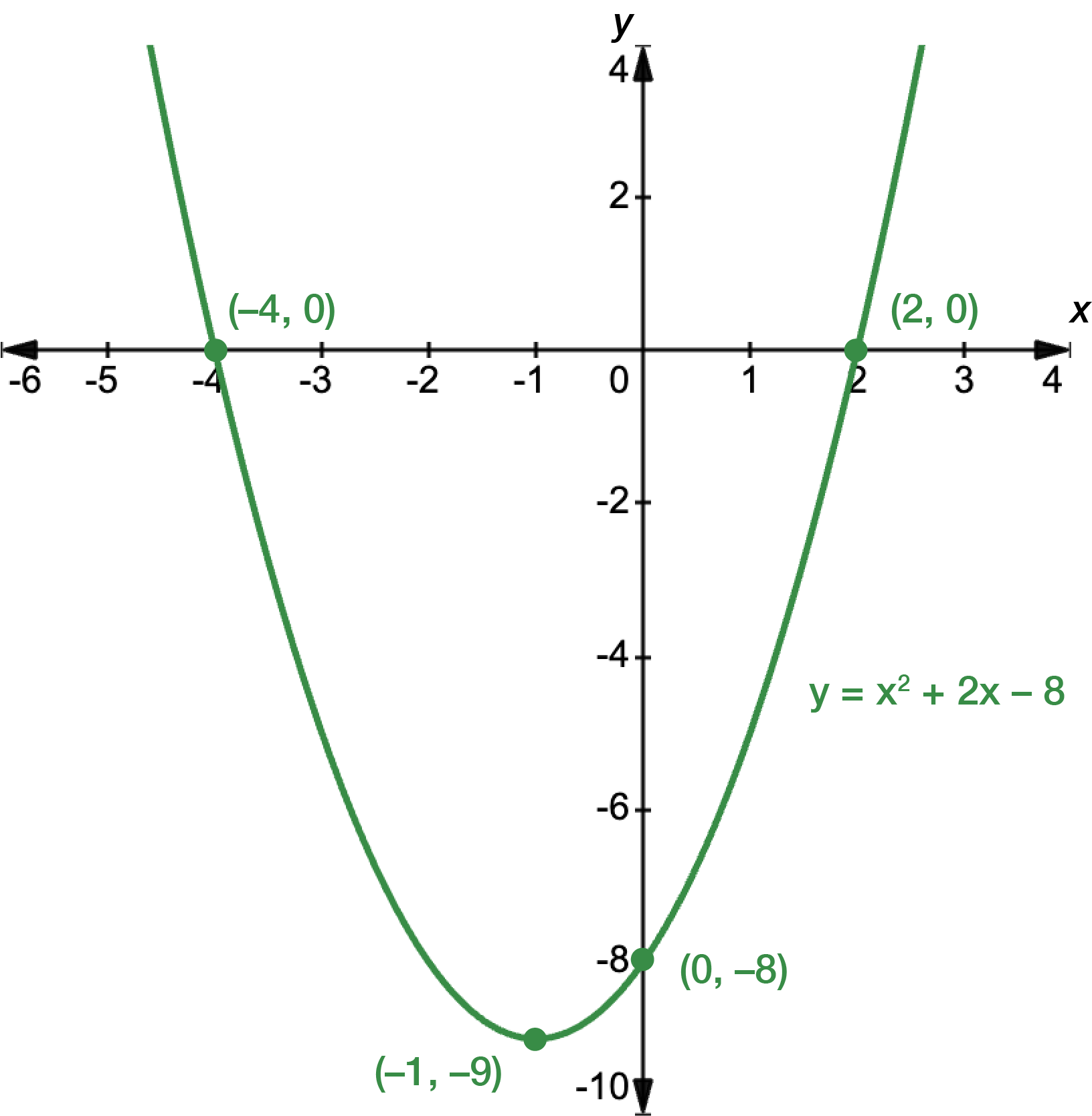
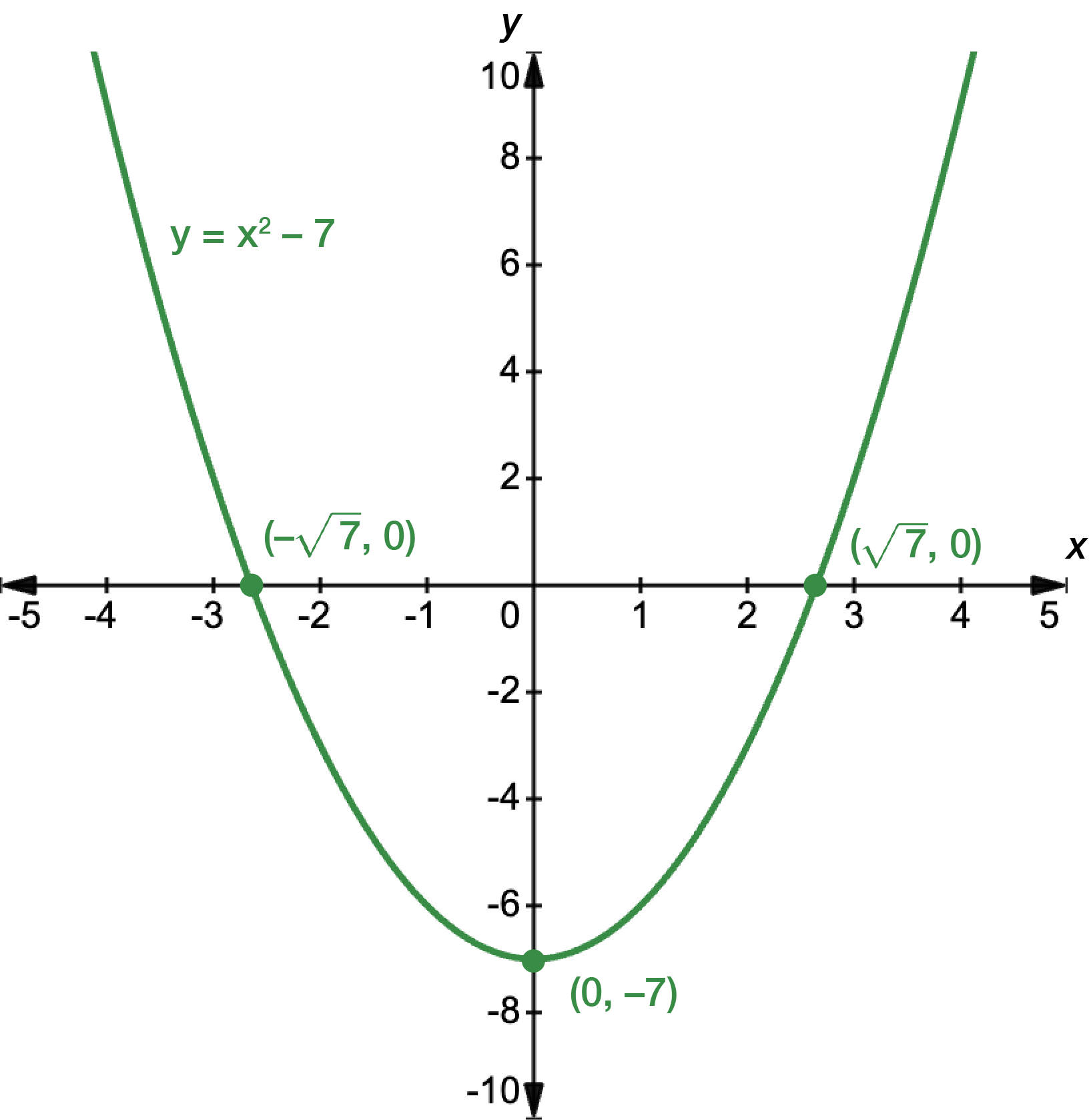
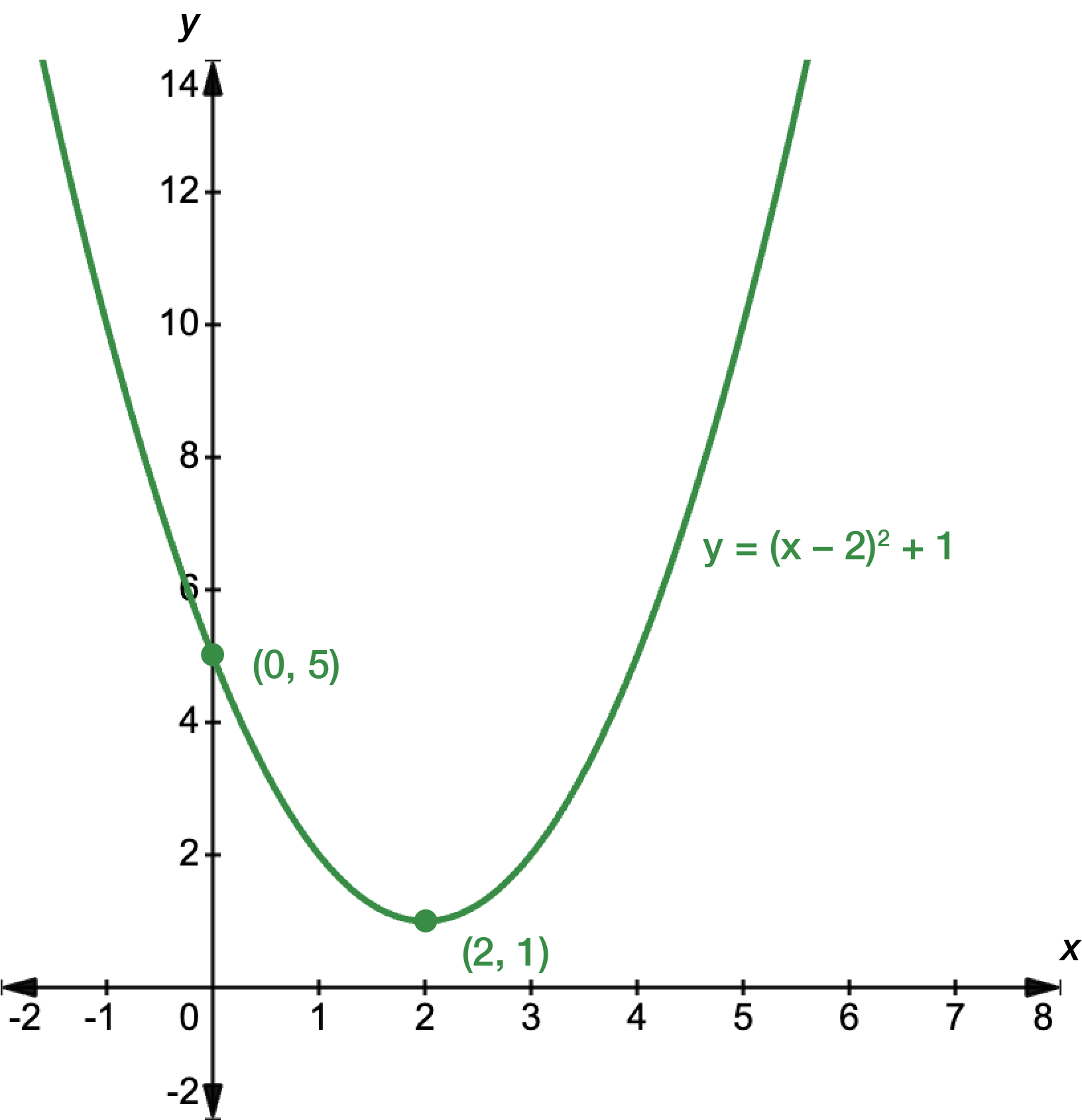
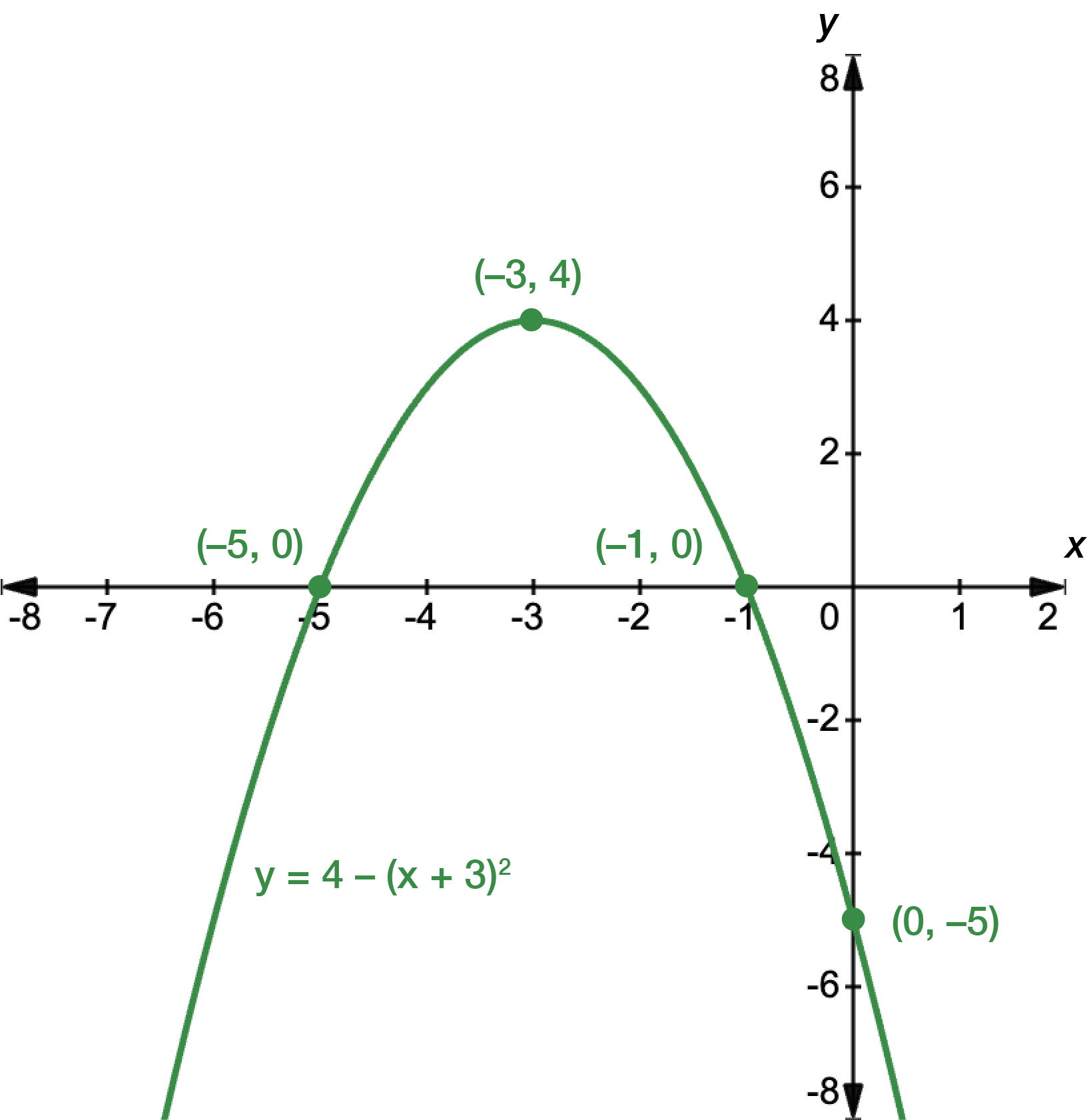
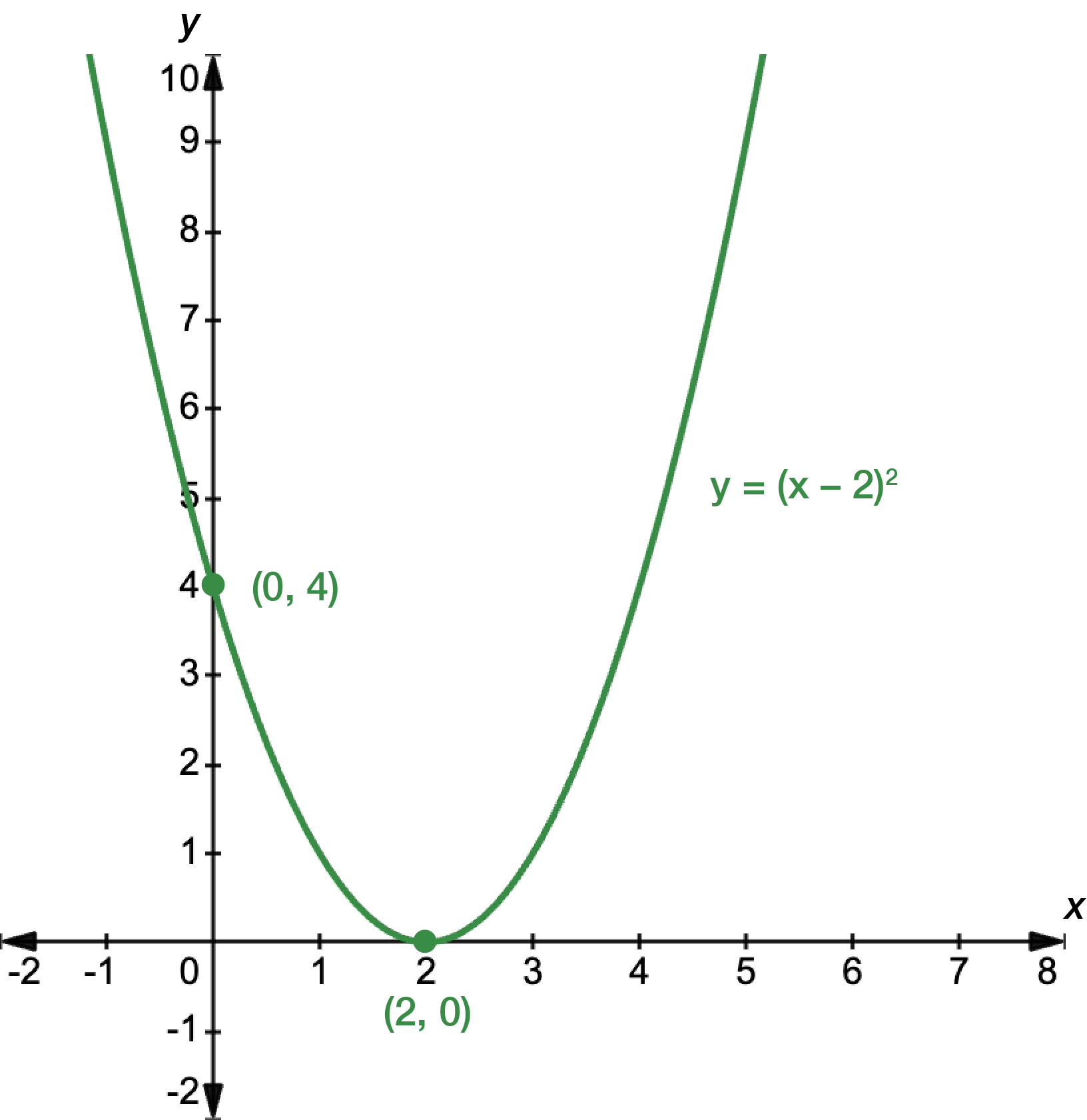
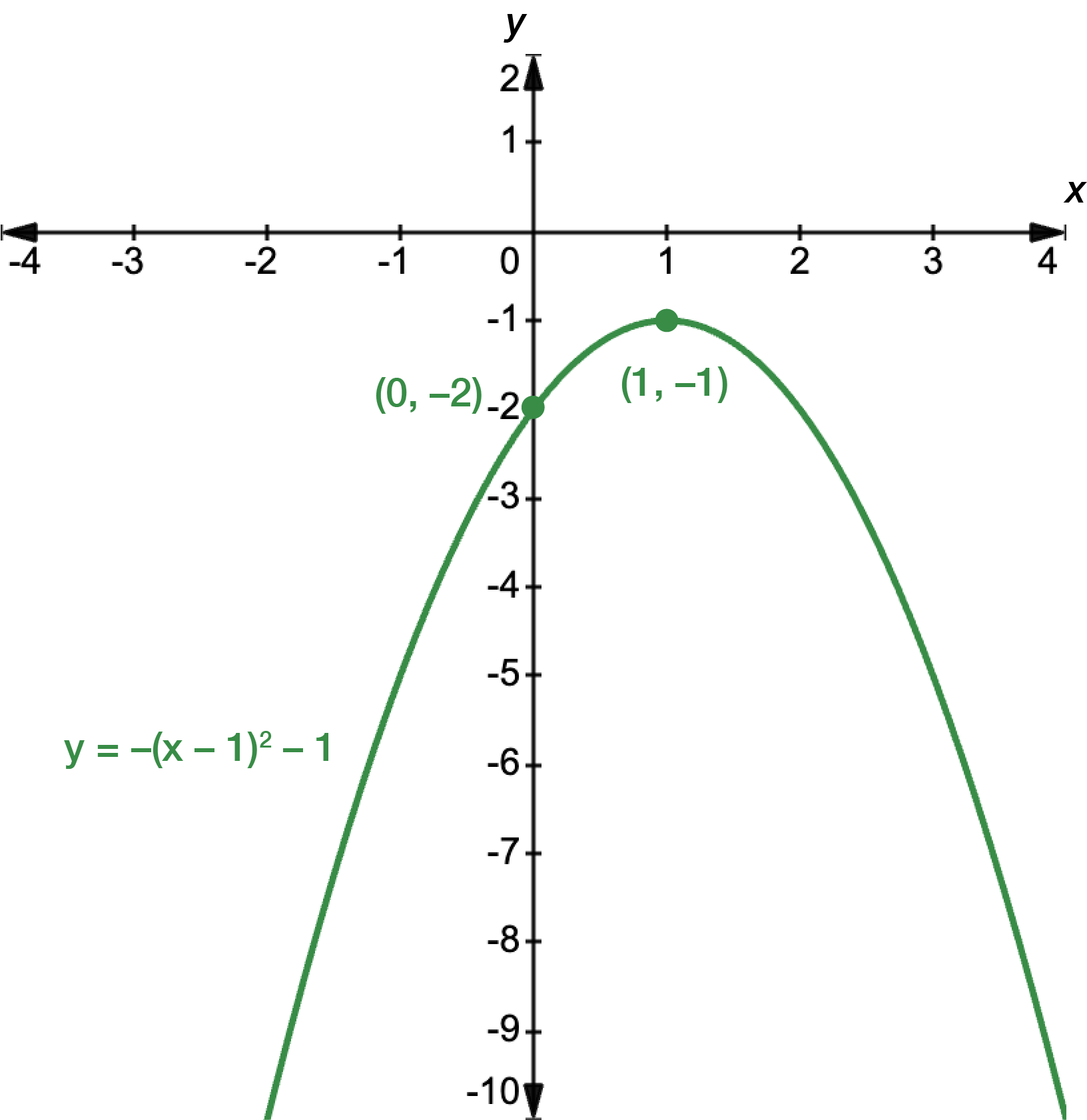
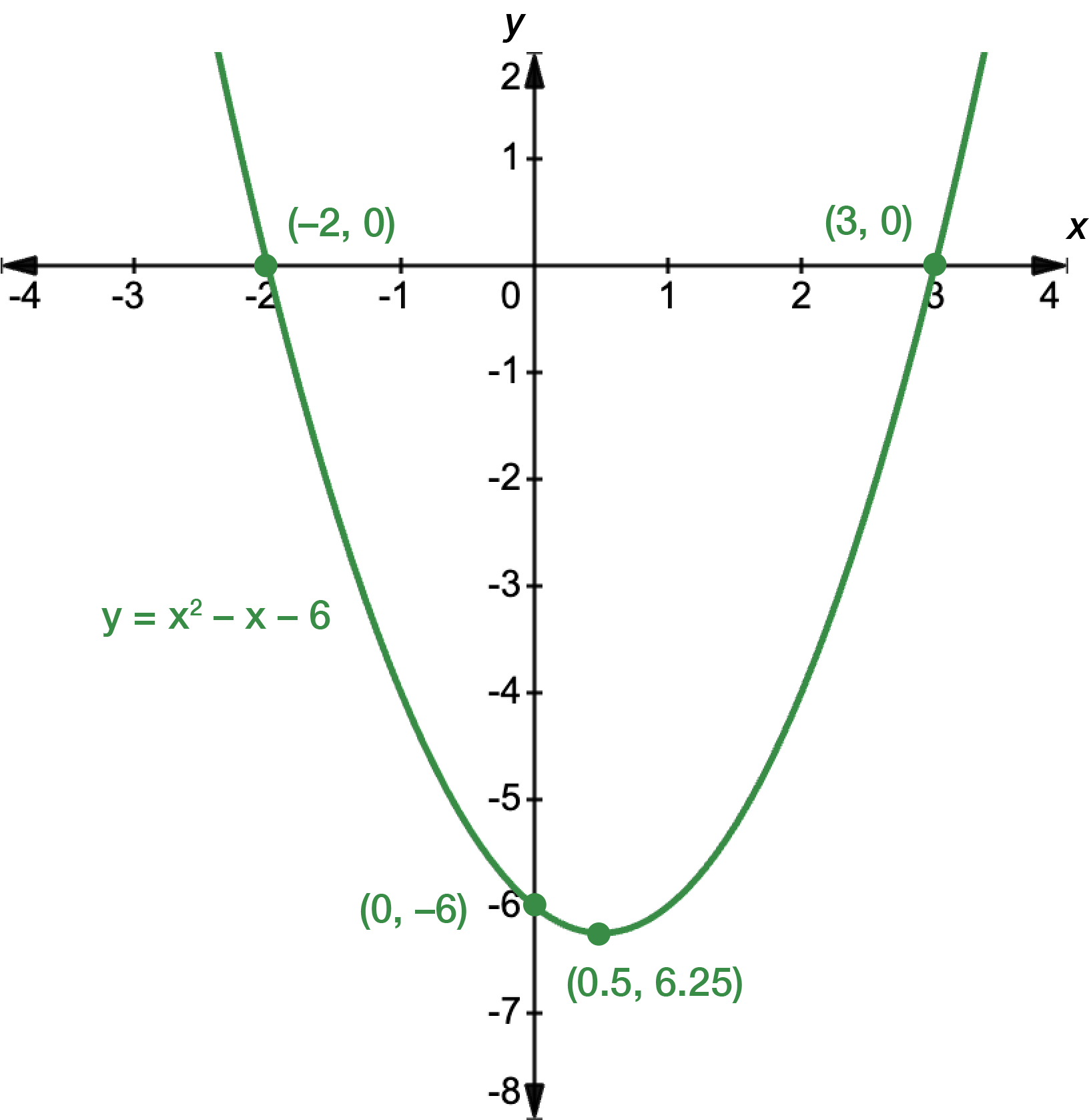
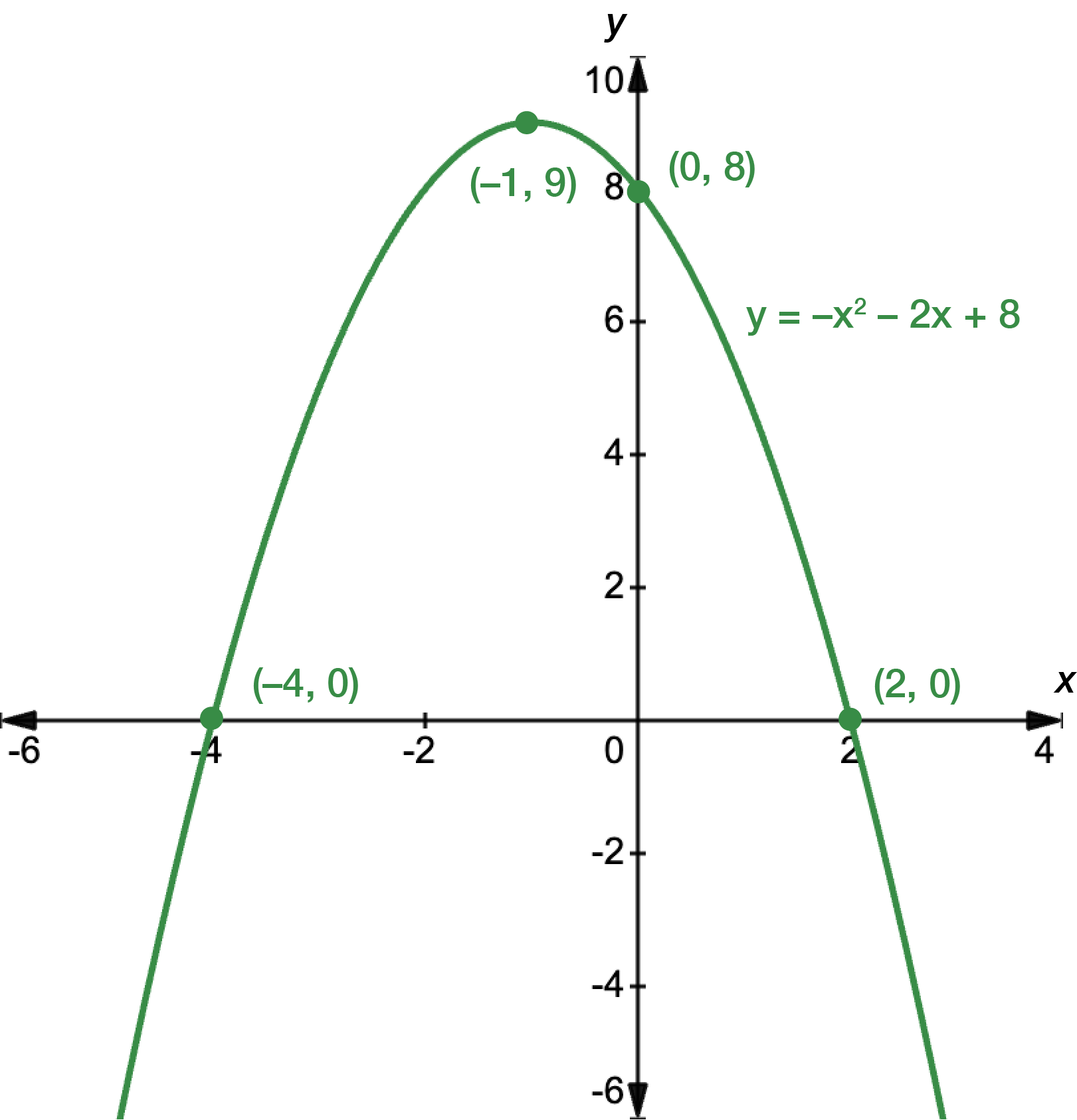
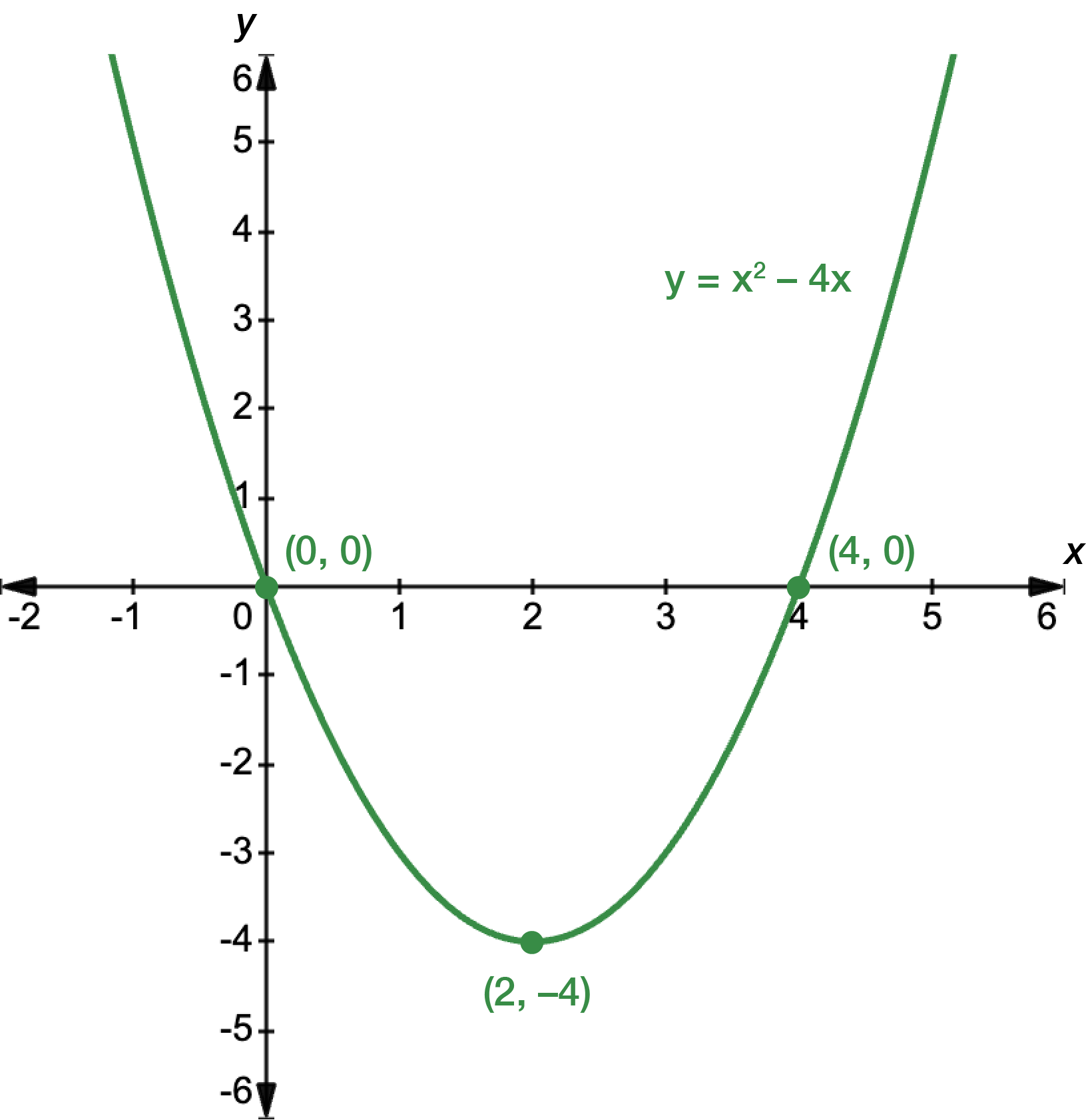
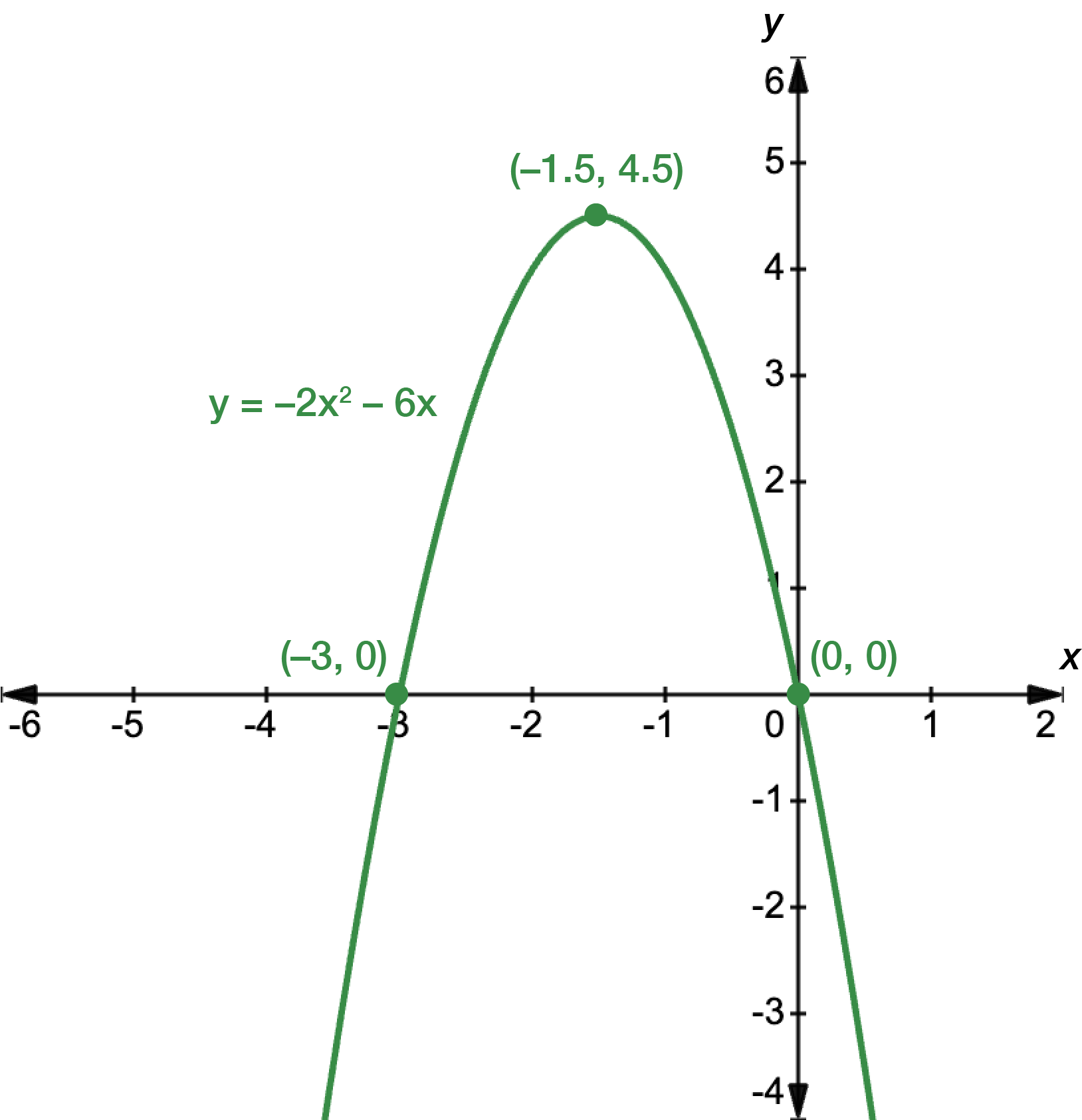
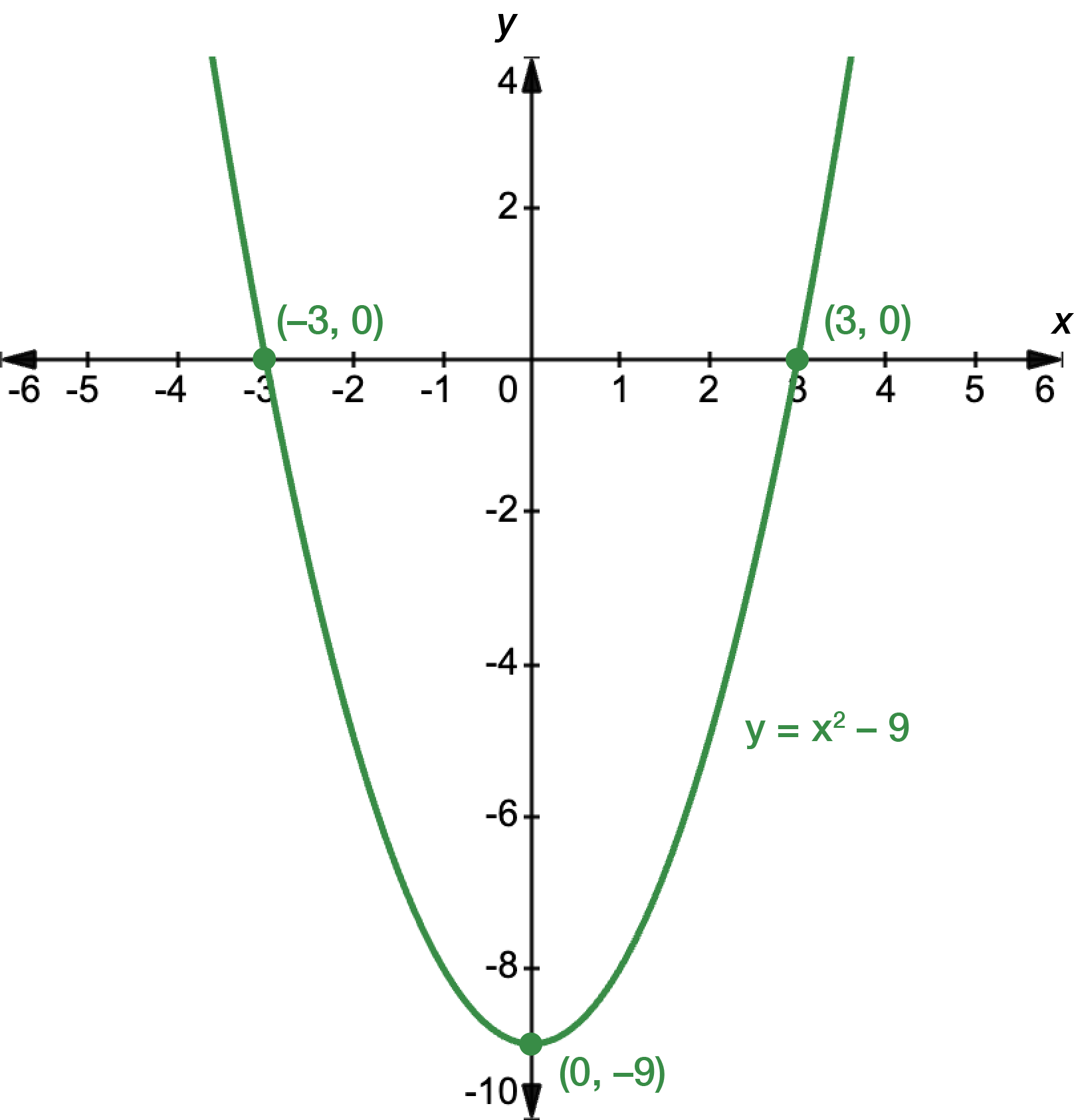
The corresponding \(h\)-coordinate is:
\[\begin{align*} h & = 3+75t-5t^{2}\\
& = 3+75(7.5)-5(7.5)^{2}\\
& = 284
\end{align*}\]
For the \(t\)-intercepts, solve for \(h=0\) using the quadratic formula.
\[\begin{align*} t & = \frac{-b\pm\sqrt{b^{2}-4ac}}{2a}\\
& = \frac{-75\pm\sqrt{75^{2}-4(-5)(3)}}{2(-5)}\\
& = \frac{-75\pm\sqrt{5685}}{-10}\\
& = -0.04,15.04
\end{align*}\]
For the \(h\)-intercept, solve for \(t=0\).
\[\begin{align*} h & = 3+75t-5t^{2}\\
& = 3+75(0)-5(0)^{2}\\
& = 3
\end{align*}\]
Since the graph is restricted to \(0\leq t\leq6\), we start at \(t=0\) and end at \(t=6\). At \(t=16\):
\[\begin{align*} h & = 3+75t-5t^{2}\\
& = 3+75(16)-5(16)^{2}\\
& = -77
\end{align*}\]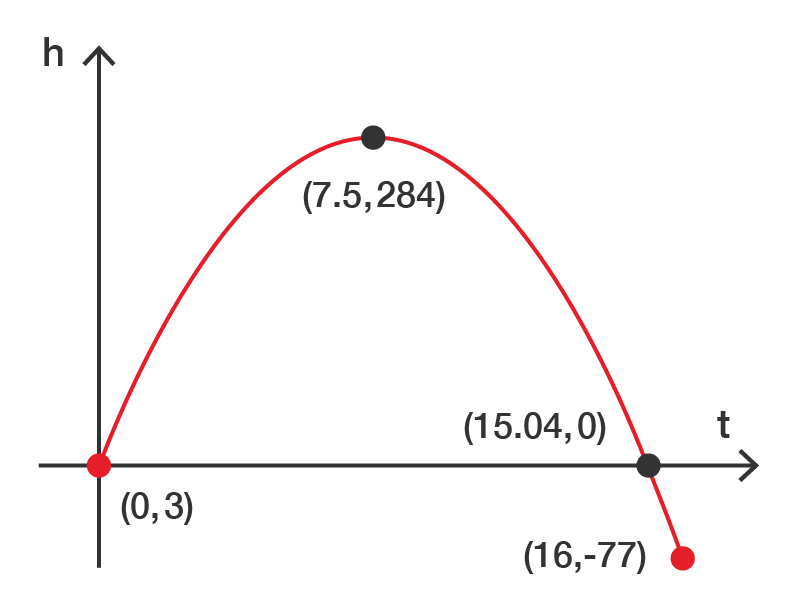
Images on this page by RMIT, licensed under CC BY-NC 4.0